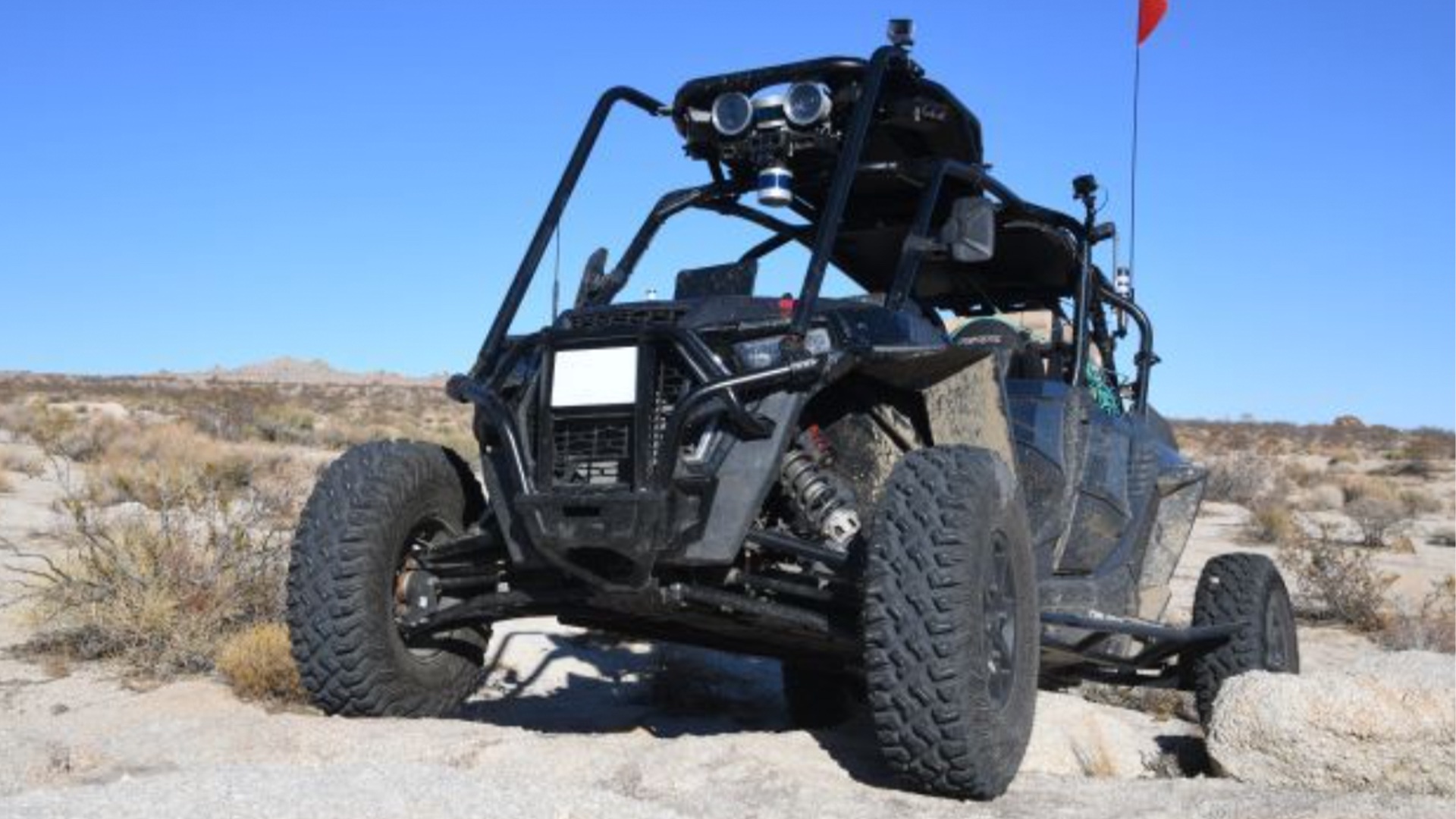

Picture a dune-buggy-like vehicle, equipped with all manner of sensors and other data-collection devices, rolling across some extremely harsh desert terrain in California’s Mojave Desert. In the driver’s seat? No one, because it is the Defense Advanced Research Project Agency’s (DARPA) Robotic Autonomy in Complex Environments with Resiliency vehicle, which completed its first round of testing in off-road environments earlier this month.
The concept of the RACER is pretty simple: “enable Unmanned Ground Vehicles (UGVs) to maneuver on unstructured off-road terrain at speeds that are only limited by considerations of sensor performance, mechanical constraints, and safety,” according to DARPA. In other words, teach a drone vehicle to maneuver in the kind of environment a military drone vehicle is going to operate in, off-road and through plenty of natural obstacles.
And with, as DARPA says, “enabling them to match human-driven speeds in realistic situations.” Basically, it’s a robotic scout that won’t be constrained by any obstacle, be it man-made or, in this case, geological in nature.
Subscribe to Task & Purpose Today. Get the latest military news, entertainment, and gear in your inbox daily.
During the latest tests, conducted in March of this year at the Army’s National Training Center at Fort Irwin, California, RACER vehicles completed more than 55 drives, ranging from approximately four to 11 miles, and traveling at speeds of up to 25 miles per hour.
“During this latest experiment, we continued to push vehicle limits in perceiving the environments to greater distances, enabling a further increase in speeds and better adaptation to newly encountered environmental conditions that will continue into RACER’s next phase,” said RACER program manager Stuart Young in a press release.

In the above video, you can watch the vehicle being tested during an NTC rotation. Maneuvering through several hundred meters of terrain with no complaints about the heat, or the dust, and it doesn’t even need to carry any shit out of the training area for disposal.
Like just about every other technologically advanced project, the potential for the RACER vehicles is immense. They’re equipped with 360° range and image sensing, multiple Light Detection and Ranging radars, color and infrared cameras, event sensors, and a plethora of other detection equipment.
These tools all work very well in a controlled environment. The problem with unmanned vehicles – and what some of these tests are working on – is unleashing these drones out into the world, where the challenges, or prompts to the software, are infinite.
During the war in Ukraine, both Ukraine and Russia experimented with autonomous unmanned vehicles. Of course, all of these vehicles are limited by their ability to only adapt to their environment based on their programming, and by their reliance on actual people.
“The whole point of fielding a UGV is to take humans out of a dangerous environment. But in all the discussions that have taken place throughout Russian military academia, no one ever talked about what happens when the vehicle is destroyed,” Samuel Bendett, a member of the Russia Studies Program and adjunct senior fellow at the Center for New American Security told Task & Purpose in 2022 when discussing the deployment of Russian unmanned ground vehicles to Ukraine. “And if soldiers have to recover the UGV, that negates the whole purpose.”
So, the robotic combat drone, or dune-buggy is not likely to make an appearance on any battlefield in the next couple of years, but the concept is definitely at the forefront of U.S. military innovation.
“Representatives from the US Army and Marine Corps were present at the experiment to aid in the transfer of technologies developed in RACER to future service uncrewed initiatives and concepts,” said DARPA.
Bring on the RACER.
The latest on Task & Purpose
- How much of a threat does Russia’s Pacific fleet pose to the US?
- 5th Security Force Assistance Brigade commander suspended
- Former Afghan interpreter graduates from boot camp to become a Marine
- Russia jams US GPS-guided weapons given to Ukraine, leaked info shows
- Taiwanese Air Force pilot’s ‘Winnie the Pooh patch’ causes international controversy